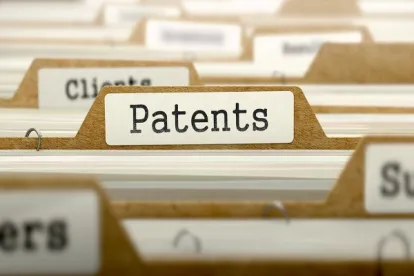Time spent on securing marketing approval for regulated products, such as pharmaceuticals, medical devices and agrochemicals effectively shortens the term of patent protection during which an innovator can recover its investment without fear of generic competition. Even a few months of additional patent term can mean the difference between millions of dollars or several billion dollars. This short article will highlight the provisions put in place for patent owners to be compensated for up to 5 years of patent term lost while developing a product and obtaining FDA approval.
Eligible FDA-approved products
Products eligible for patent term extension (PTE) include human drugs[i], human biological products such as viruses, therapeutic sera, toxins, antitoxins, vaccines, blood/blood components or derivatives, allergenic products, or analogous products[ii], animal drugs and veterinary biologics, medical devices, and food or color additives subject to regulation under the Federal Food, Drug, and Cosmetic Act (FFDCA).[iii]
Patents eligible for PTE are those that claim a product, a method of using the product, or a method of manufacturing the product. 35 U.S.C. Section 156(a) sets forth conditions for granting PTE:
the term of the patent has not expired before an application is submitted;[iv]
the term of the patent was never extended;[v]
the application for extension was submitted by the owner of the patent or its agent, within the 60-day period beginning on the date the product received permission for commercial marketing or use;[vi],[vii]
In addition, the product has been subject to a regulatory review period before its commercial marketing or use, and
permission for the commercial marketing or use of the product after such regulatory review period is the first permitted commercial marketing or use of the product under the provision of law under which such regulatory review period occurred.[viii]
For combination drug products that contain more than one active ingredient, so long as at least one of the active ingredients is new to the marketplace, the patent covering the combination drug product is eligible for PTE.[ix]
Scope of Protection During the Extended Period
During the extended period, the scope of protection is limited to "any use approved for the product" if the patent claims a product, and to "any use claimed by the patent and approved for the product" if the patent claims a method of using a product.[x] In Merck & Co., Inc. v. Kessler (1996), the Federal Circuit indicated that "the restoration period of the patent does not extend to all products protected by the patent but only to the product on which the extension was based."[xi]
The effective patent term including the restoration period cannot exceed 14 years following FDA approval of the new drug.[xii] And, the relevant regulatory review period for calculating the length of the PTE is the review period that occurred after issuance of the patent.[xiii] Even though the patent owner may submit multiple patent applications to the USPTO based on the same regulatory review period, ultimately one patent must be chosen for PTE.
The Federal Food, Drug, and Cosmetic Act & the Public Health Service Act
The FFDCA and the Public Health Service Act (PHSA) contain statutory provisions under which regulatory review can occur. These provisions are:
o Section 505 of the FFDCA for human drugs
o Section 505 of the FFDCA and Section 351 of the PHSA for biologics
o Section 515 of the FFDCA for medical devices
o Section 512 of the FFDCA for animal drugs
o Section 409 or section 721 of the FFDCA for food or color additives
A product as described in 35 U.S.C. section 156 can be approved under one or more of these sections. In other words, each provision can have its own first permitted commercial marketing or use of a product. This means that a product may be eligible for PTE under one section of the FFDCA even if it was previously approved by the FDA under a different section of the FFDCA. For example, a patent covering a product may be entitled to PTE if the product received the first commercial marketing approval under section 505 of the FFDCA even if it was previously approved under section 512. For instance, the USPTO granted 5 years of PTE to U.S. Patent No. 5,985,320 covering the animal product OvuGel (active ingredient: triptorelin acetate), which was approved under section 512 of the FFDCA. The PTE was granted for OvuGel even though another salt, triptorelin pamoate, was previously approved for human use as Trelstar under a different section of the FFDCA, section 505, for U.S. Patent No. RE42072 (reissue of U.S. Patent No. 6,908,623).[xiv]
Another example is everolimus. Here, the USPTO granted 5 years of PTE to U.S. Patent No. 5,665,772 covering the human product Afinitor (active ingredient: everolimus), which was approved under section 505 of the FFDCA. Prior to that, PTE was granted for Xience V Everolimus Eluting Coronary Stent System which was approved for human use under a different section of the FFDCA, section 515, for U.S. Patent No. 5,451,233.
With the complexities associated with a PTE application, one must carefully consider the appropriate section of the relevant statute under which to apply for PTE and analyze the relevant eligible patents.[xv]
[i] After the PhotoCure decision, the USPTO framed the PTE eligibility determination for an approved drug product in four parts: (1) is the active ingredient physically present in the approved drug product, (2) was the active ingredient previously approved, (3) was a salt of the active ingredient previously approved, or (4) was an ester of the active ingredient previously approved? If the answer to any question is yes, the permission to commercially market or use the drug product is not the first permitted commercial marketing or use of the product/active ingredient as required by section 156(a)(5)(A).
[ii] 42 U.S.C. § 262.
[iii] 35 U.S.C. § 156(f)(1).
[iv] 35 U.S.C. § 156 (a)(1).
[v] 35 U.S.C. § 156 (a)(2).
[vi] To determine the date on which the product receives permission for commercial marketing or use, section 156 (d)(1) has been amended by the AIA, Section 37, to state that "if such permission is transmitted after 4:30 P.M., Eastern Time, on a business day, or is transmitted on a day that is not a business day, the product shall be deemed to receive such permission on the next business day."
[vii] 35 U.S.C. §§ 156 (a)(3) and (d)(1).
[viii] 35 U.S.C. §§ 156 (a)(4) and (5).
[ix] See Arnold Partnership v. Dudas, 362 F.3d 1338 (Fed. Cir. 2004).
[x] See 35 U.S.C. §§ 156 (b)(1) and (2).
[xi] Merck & Co., Inc. v. Kessler, 80 F.3d 1543, 1547 (Fed. Cir.1996). The court also noted several other limitations based on the language of Section 156: first, "[r]egardless of the time so lost, if a patent was issued and testing began before the 1984 enactment of the Hatch-Waxman Act, the total extension period may not exceed two years . . . otherwise the restoration period is limited to no more than five years. . . ." Further, "the effective patent term including the restoration period may not exceed 14 years following FDA approval of the new drug," and "the term of the patent may be given only one restoration extension. If the term of the patent has received such an extension, the patent may not be given another restoration extension even for another drug covered by the patent whose marketing also is delayed by reasons of FDA procedures."
[xii] 35 U.S.C. § 156(c)(3).
[xiii] 35 U.S.C. § 156(c).
[xiv] A salt of triptorelin, triptorelin acetate, was approved before a second product containing a different salt was approved.
[xv] Contacts for information about the Patent Restoration Program. At the FDA: Beverly Friedman (Beverly.Friedman@fda.hhs.gov), 301-796-7900; at the USPTO: Mary Till (Mary.Till@uspto.gov), 571-272-7755; US Patent Terms Extended Under 35 USC 156 http://www.uspto.gov/patent/laws-and-regulations/patent-term-extension/patent-terms-extended-under-35-usc-156




 />i
/>i
